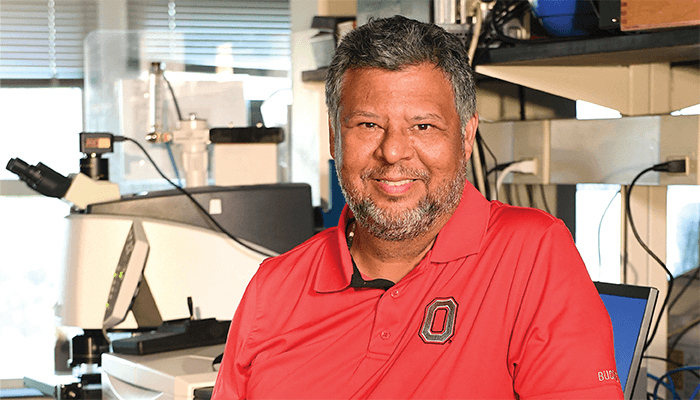What are your main spectroscopy research interests?
I apply novel analytical technologies to agricultural product testing, with a focus on developing portable and handheld sensors based on vibrational (infrared and Raman) spectroscopy to support quality, safety, and nutritional monitoring of food and agricultural products. In collaboration with leading optical sensing companies, my molecular vibrational lab has combined spectroscopy with chemometrics for food safety and quality assurance. We have also developed predictive models for the rapid detection, identification, and classification of chemical and microbial contaminants as well as food components with biological activity.
What are the main applications – and specific advantages – of vibrational spectroscopy in food analysis?
FT-NIR and mid-IR spectroscopy are mainly used for the rapid and non-destructive detection of major components in food – including moisture, protein, fat, and carbohydrates. Dairy, grains, beverage, and meat sectors have all embraced the technology. Vibrational spectroscopy provides spectral information from diverse functional groups present in different samples, allowing us to obtain unique profiles from food analytes that can be used to quantitate target molecules or identify any potential tampering contaminants. NIR has been a benchmark for developing predictive models that estimate major component levels. While mid-IR provides higher fingerprinting capabilities and detection levels to screen for contaminants and adulteration, NIR can deeply penetrate materials – allowing the analysis of intact and non-homogeneous material. Mid-IR attenuated total reflectance (ATR) can only penetrate a few microns deep and requires homogenization of the sample.
Could you tell us a little about the use of optical sensor technology for food analysis?
The miniaturization of spectrometers – particularly using NIR spectroscopy – has opened doors for field analysis and allowed us to make measurements in-situ without transporting samples to the lab. There is now a broader range of wavelength selection technology employed to disperse polychromatic light, such as MEMS, diffraction grating, volume phase holographic grating, LVF, the Fabry-Pérot interferometer and detectors, such as CCDs or InGaAs. Our work uses the technology to collect spectral information in the 1100 to 2500 nm range so we can access unique information from combination modes that appear in polyatomic molecules. We have explored the use of ATR systems operating in the mid-IR region (Agilent 4500 and 5500 series) for quality assurance, phenotyping of breeding materials, and identifying food contaminants.
Raman spectroscopy has revolutionized handheld systems and given access to unique fingerprinting capabilities for remote sensing. We have been working on applications of different systems equipped with excitation lasers in the NIR (1064 nm, Wasatch and Rigaku) and visible (785 nm, Metrohm) regions. Raman equipped with a 1064 nm excitation laser effectively limits background fluorescence but weakens the energy for molecular vibrations of biological samples. Our research on SERS has shown limited signal by employing a 1064 nm excitation laser as opposed to a laser in the visible region.
What are the main analytical challenges that manufacturers face in the food and beverage industry?
The complex nature of foods often makes it difficult for the technology to be implemented in some application areas. In the fruit and beverage sector, the high content of water is a challenge because of its strong dipole nature. The water signal masks important features in the spectrum – making it difficult to develop quantitative and classification algorithms.
The development of robust predictive models using chemometrics is another challenge. Models need to capture the variance of the samples and often require a large data set to provide robustness. Further, models need to be independently validated to determine their predictive ability. The field of chemometrics and machine learning is advancing at a fast pace, which will help us extract information from convoluted spectral data and create powerful algorithms that obtain maximum information from the raw data.
What are the most cutting-edge techniques in food analysis?
I’ve already name dropped several exciting technologies in this space! NIR handheld technology is advancing at a fast pace – and using micro-electromechanical systems – spectra collection can be widened to the short wave IR and help develop predictive models. Surface enhanced Raman spectroscopy (SERS) can improve detection limits into the ppb level; the Raman signal of a target analyte can be enhanced when it is in proximity to the SERS substrate – depending on the shape, size, and orientation of the nanoparticles. And there is exciting research on functionalized SERS substrates with unique recognition ligands and encapsulation. Nevertheless, improvements in SERS substrates are still required for consistent detection of analytes in complex environments. XRF is also an interesting technology for in-field elemental analysis – and detection limits are improving.





